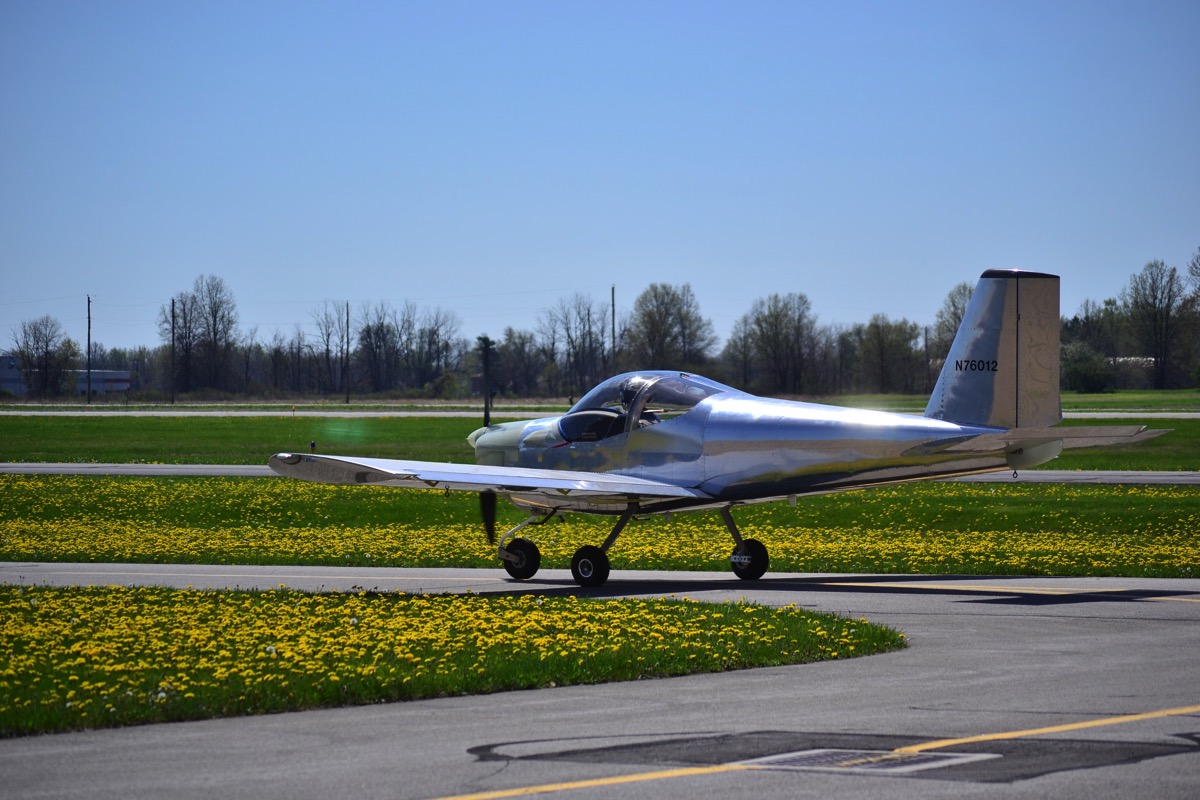After much wringing of hands and double checking and running inspection checklists, I finally committed to actually flying. I had a support & photography staff of 3: best friend Dale and his wife, Carol, and Dave R, whom I met when he started his own RV-12. (My wife wanted to know about the flight after the fact.)
Overall, the flight went almost exactly as planned, and with no unexpected findings or upsets. I made one more high speed taxi test, actually on runway 28. I used full throttle for the first time to verify that full torque did not produce unmanageable behavior. Taxied back to 28 (and then back-taxi to reach the actual departure end, since there’s construction in progress) then took off with 0° flaps. Climb was positive and smooth, at well over 700 fps at about 75-80 kts. Airspeed and groundspeed agreed as expected, but quickly diverged at altitude, with a much stronger than expected wind from the south. (I’m not sure if that’s real or an artifact of a poorly calibrated airspeed. The wind vector was pretty constant as I circled (15-18 from South), so it might have been real, but it’s still something to keep an eye on.)
I initially thought I had a heavy left wing, but it was actually very very well balanced in roll. I think the stick is a touch left-of-center when the plane is straight and level. If so, that shouldn’t be too hard to correct when I do the 1st inspection that calls for removing the seat pan to get at the linkages down there.
The over-the-nose visibility is excellent, even compared to the Cardinal (which has pretty good visibility of its own.) As a result, I had a tendency to hold too much nose up and I climbed well above my initial intention (quite arbitrary) of 4000’ and eventually ended up at 6000’. Turning response was smooth in both left & right. The electronic ‘ball’ was relatively insensitive, but quite usable. This was the 3rd time (1st two were in DG’s RV-12) that I was flying behind all glass, and I could tell that it would be some time before it was 2nd nature. Luckily, this is a plane that is all about keeping your eyes out of the cockpit and looking out side and flying by the seat of your pants.
Descent to pattern altitude was unremarkable from an airframe perspective, but I did note the infamous throttle creeping behavior associated with the springs in the carburetors. Even with the friction lock fully tightened, the throttle can easily be turned using the vernier mechanism. I think that the vernier ‘creeps’ due to the engine vibration and the springs.
I made a low pass over 28 and then executed a balked landing in order to get a feel for the pitch changes associated with that maneuver. There weren’t any. OK, now if I need to abort a landing, I’ll have done one before. Set up for another circuit, and made one of the nicest landings I could ask for. The idle stops are set a tad too high, and I couldn’t get less than 2500 RPM (1000 prop RPM) on approach, and that led to a long, long float before she touched down. (I will have to set the idles back far enough that the engine probably won’t run on the main carbs when cold, but that’s exactly what the choke circuits are for.)
Taxied back to the hangar, got pats on the back from my friends, and buttoned up the hangar. I didn’t write down any of the numbers on the flight card out of the Product Acceptance Procedure. I’ll download the black-box data next week (next opportunity to get to the airport) and fill in as much as I can, and then do a very thorough post-flight inspection.
















